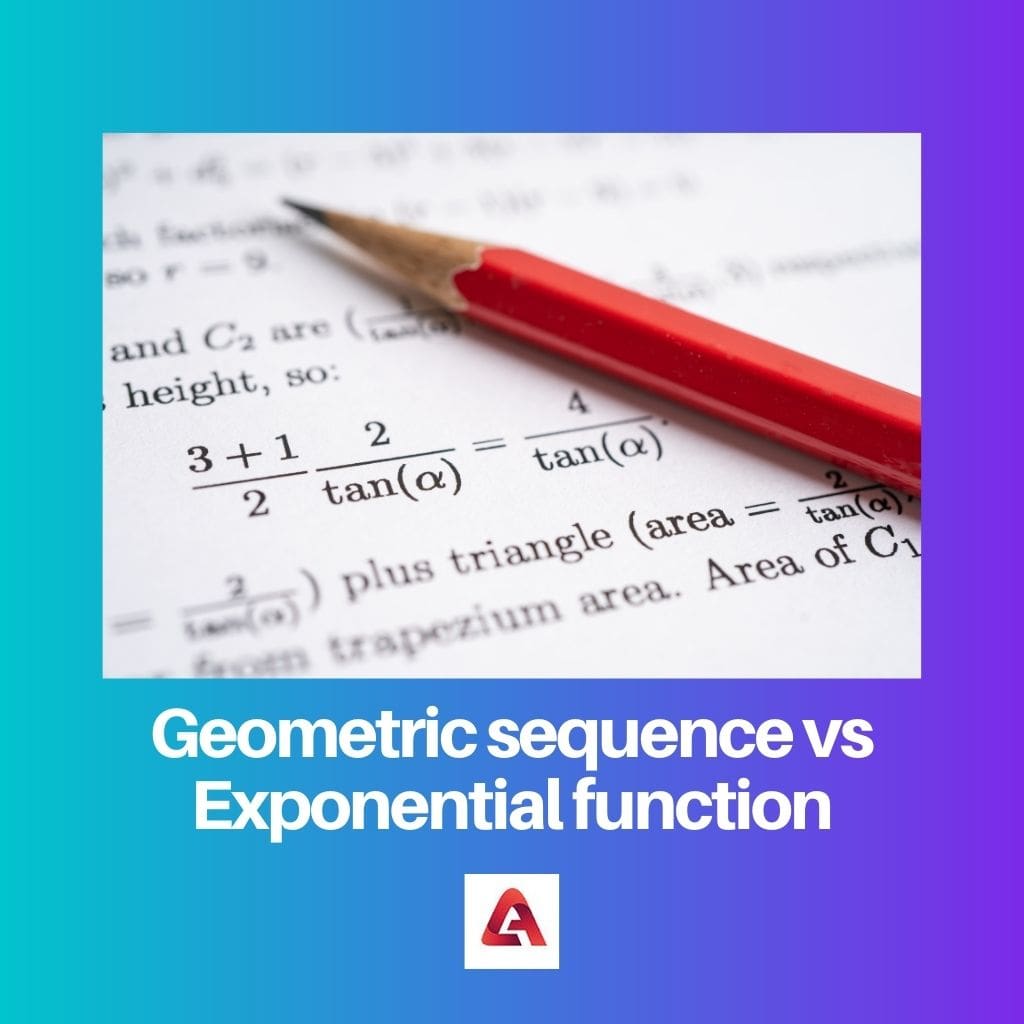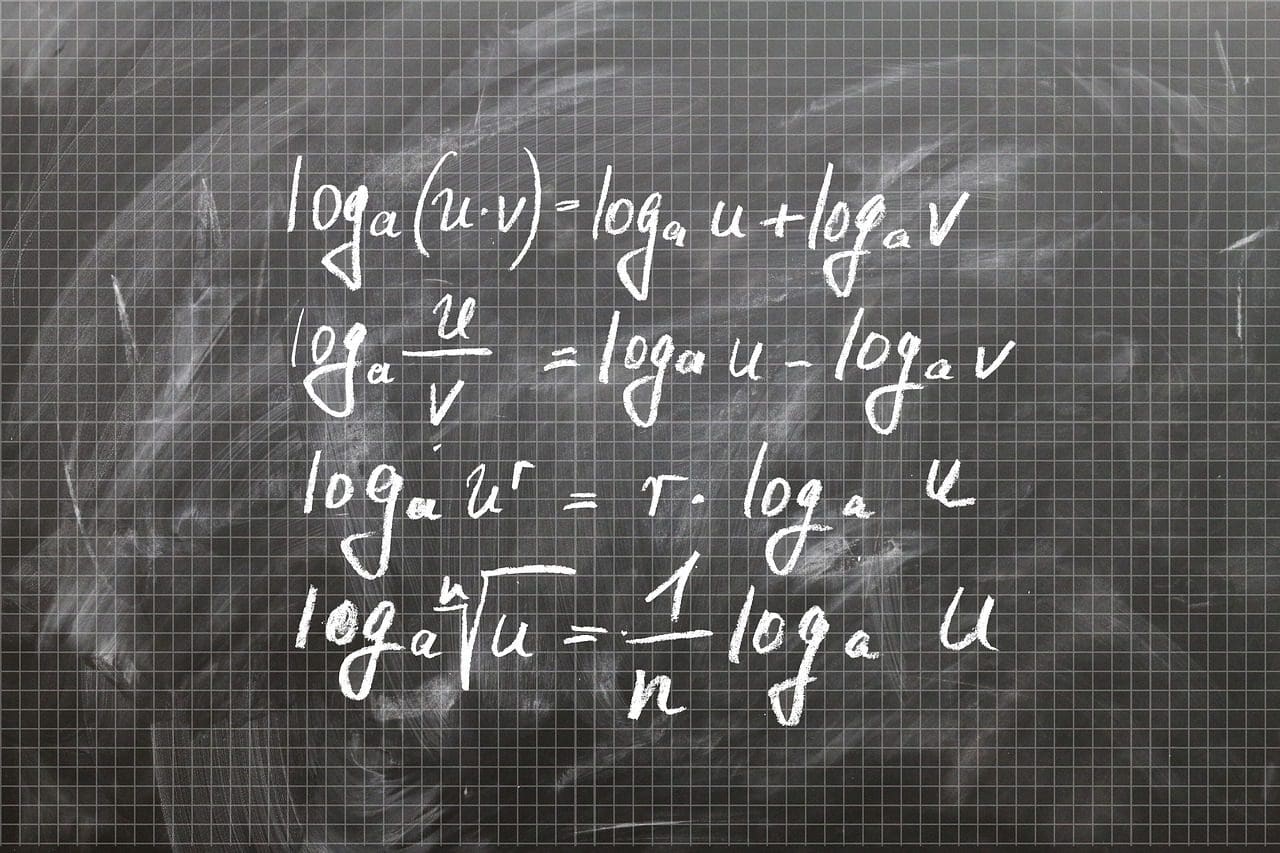Functions are formulas expressed as f(x)= x. A sequence is technically a type of function that includes only integers.
Key Takeaways
- Structure: Geometric sequences are ordered sets of numbers with a constant ratio between successive terms, while exponential functions are mathematical expressions involving a base raised to a variable power.
- Discrete vs continuous: Geometric sequences consist of discrete values, while exponential functions represent continuous values across a domain.
- Examples: Geometric sequences include {2, 6, 18, 54, …} with a common ratio of 3; exponential functions include f(x) = 2^x or g(x) = 3^x.
Geometric Sequence vs Exponential Function
The difference between a geometric function and an exponential function is that a geometric sequence is discrete, while an Exponential function is continuous. This means that a geometric line has specific values at present at distinct points, while an exponential function has varied values for the variable function of x.

Exponential Functions and Geometric sequences are a form of a growth pattern in mathematics. Although they may seem similar at one glance, they are very different regarding the rules they follow.
The geometric function is achieved by multiplying subsequent numbers by a standard ratio. On the other hand, an exponential function is a function in which a variable exponent forms a sequence.
Comparison Table
| Parameter of Comparison | Geometric Sequence | Exponential Function |
|---|---|---|
| Definition | It is a sequence achieved by multiplying subsequent numbers with a standard fixed ratio. | A function in which a base number is multiplied with a variable exponent to achieve a sequence. |
| Meaning | A geometric sequence represents the increment in the size of geometric systems, which is why the dimension/ fixed ratio is essential. | Exponential function can be seen as a representation of dynamic systems such as bacteria growth or matter decay. |
| Variable | The value of the variable is always a whole number | The variable’s value includes real numbers of both negative and positive values. |
| Nature of sequence | The obtained sequence is discrete since values are placed at specific points. | The series is continuous as there is an assigned function value for possible values of x. |
| Representation formula | a+ar+ar2+ar3 where r is the fixed ratio | f(x)= bx, where b is the base value, and x is an actual number. |
What is Geometric Sequence?
A geometric sequence is derived by multiplying subsequent figures with a fixed number. In other words, if we begin by multiplying a specific number by a number, say x, to get the second number, then multiply the second number by x again to get the third number, the resultant pattern would be called a geometric sequence.
The characteristic feature of a Geometric sequence is that the ratio of subsequent numbers does not change throughout the series.
In the case of a geometric sequence, the value of standard ratio r determines the pattern; for example, if r is one, the design remains constant, while if r is more significant than one, the plan shall grow up to infinity.
Mathematically, a geometric sequence can be represented in the following way;
a+ar+ar2+ar3 and so on. Geometric progression represents the growth of geometric shapes by the fixed ratio. Hence the dimension in the sequence matters. Only whole numbers can be used in a geometric progression.

What is Exponential Function?
Exponential functions represent dynamic systems, such as the growth of bacteria or the decay of matter.
The exponential function can be used to express the phenomenon of exponential growth. This is characterised by a fixed period in which the initial value of the process is doubled.
It is worth noting that under all circumstances, an exponential function will have a better growth rate than a polynomial function.

Main Differences Between Geometric Sequence and Exponential Function
- A geometric sequence is discrete, while an exponential function is continuous.
- Geometric sequences can be represented by the general formula a+ar+ar2+ar3, where r is the fixed ratio. At the same time, the exponential function has the formula f(x)= bx, where b is the base value, and x is an actual number.



